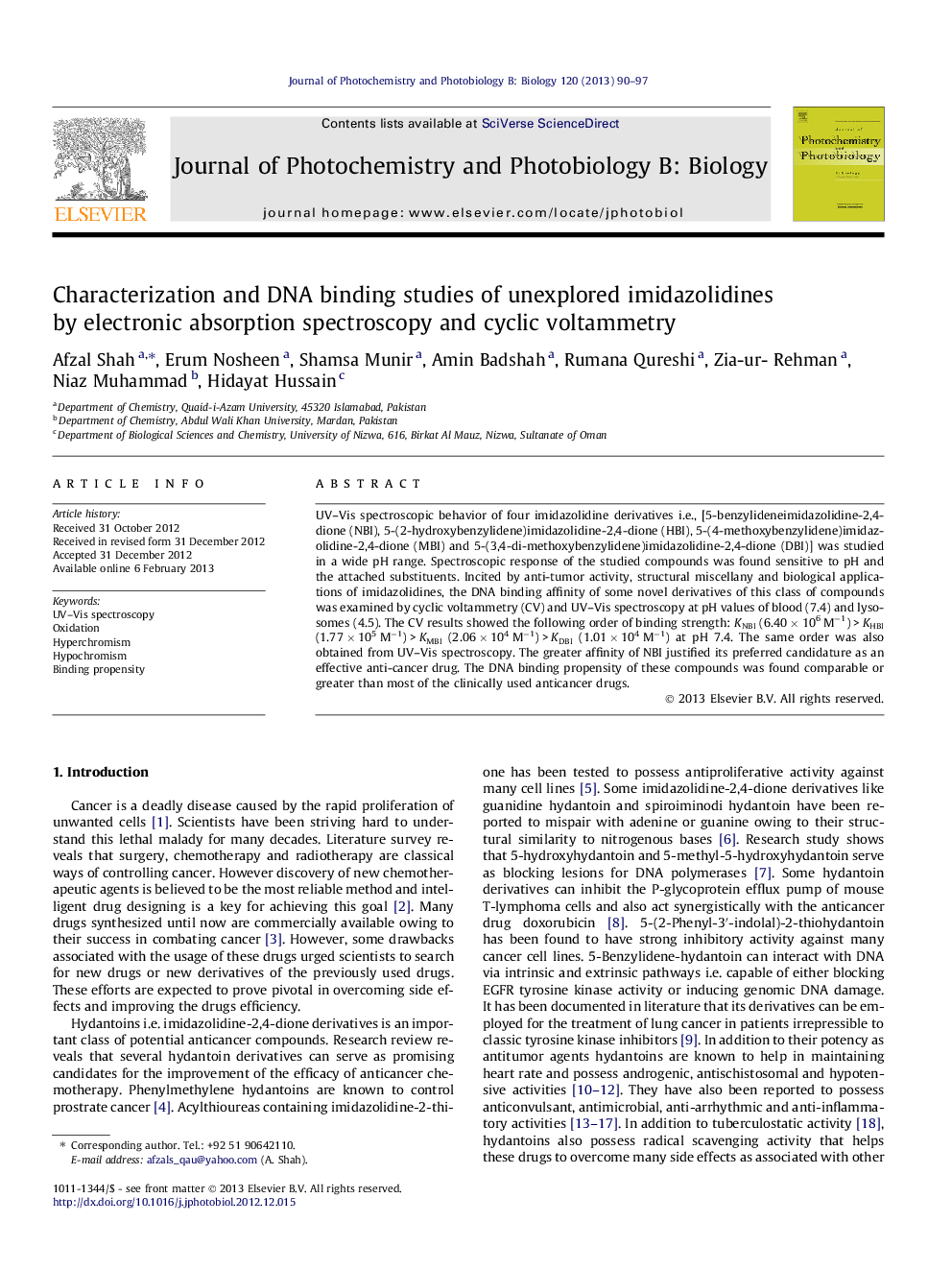| Article ID | Journal | Published Year | Pages | File Type |
|---|---|---|---|---|
| 30633 | Journal of Photochemistry and Photobiology B: Biology | 2013 | 8 Pages |
UV–Vis spectroscopic behavior of four imidazolidine derivatives i.e., [5-benzylideneimidazolidine-2,4-dione (NBI), 5-(2-hydroxybenzylidene)imidazolidine-2,4-dione (HBI), 5-(4-methoxybenzylidene)imidazolidine-2,4-dione (MBI) and 5-(3,4-di-methoxybenzylidene)imidazolidine-2,4-dione (DBI)] was studied in a wide pH range. Spectroscopic response of the studied compounds was found sensitive to pH and the attached substituents. Incited by anti-tumor activity, structural miscellany and biological applications of imidazolidines, the DNA binding affinity of some novel derivatives of this class of compounds was examined by cyclic voltammetry (CV) and UV–Vis spectroscopy at pH values of blood (7.4) and lysosomes (4.5). The CV results showed the following order of binding strength: KNBI (6.40 × 106 M−1) > KHBI (1.77 × 105 M−1) > KMBI (2.06 × 104 M−1) > KDBI (1.01 × 104 M−1) at pH 7.4. The same order was also obtained from UV–Vis spectroscopy. The greater affinity of NBI justified its preferred candidature as an effective anti-cancer drug. The DNA binding propensity of these compounds was found comparable or greater than most of the clinically used anticancer drugs.
Graphical abstractFour imidazolidines were characterized in a wide pH range by electronic absorption spectroscopy. Cyclic voltammetry and UV–Vis spectroscopy were used for the establishment of organized structure activity relationships and evaluation of kinetic and thermodynamic parameters of these DNA binding compounds.Figure optionsDownload full-size imageDownload as PowerPoint slideHighlights► Four imidazolidines were explored in a wide pH range. ► Organized structure–activity relationships were established. ► The studied compounds were found to interact with DNA. ► The results evidenced groove binding as the dominant mode of interaction. ► Electrochemical and UV–Vis spectroscopic results were found in good agreement.
